Affiliate links on Android Authority may earn us a commission. Learn more.
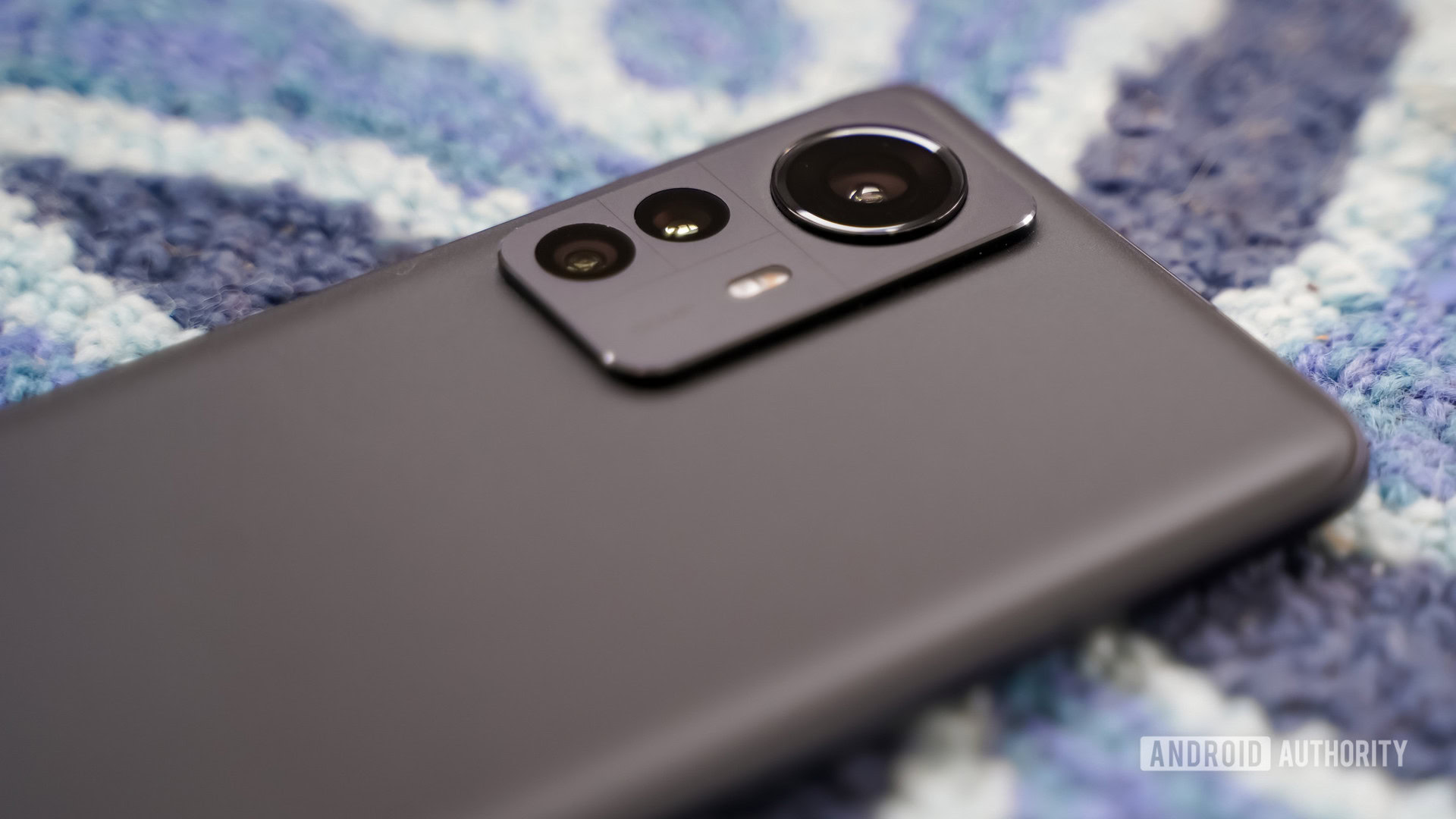
Xiaomi 12 Pro review: Power over polish
Published onMay 4, 2023
Xiaomi 12 Pro
MSRP:
What we like
What we don't like
Our scores
Xiaomi 12 Pro
The Xiaomi 12 Pro stands at the top of Xiaomi’s 2022 flagship series with the biggest display, the best specs, and the most capable camera arrangement. Along with the modern appointments, the Xiaomi 12 Pro enjoys a modest design refresh when compared to the 2021 Xiaomi Mi 11 series. However, the phone lacked a few expected features now common among modern flagships. Can the updated internals and new design complete the picture for Xiaomi, particularly given the intense competition in the £1,000 flagship space? Find out in the Android Authority Xiaomi 12 Pro review.
Update, May 2023: We’ve updated this Xiaomi 12 Pro review to include the latest competition, and more.
What you need to know about the Xiaomi 12 Pro
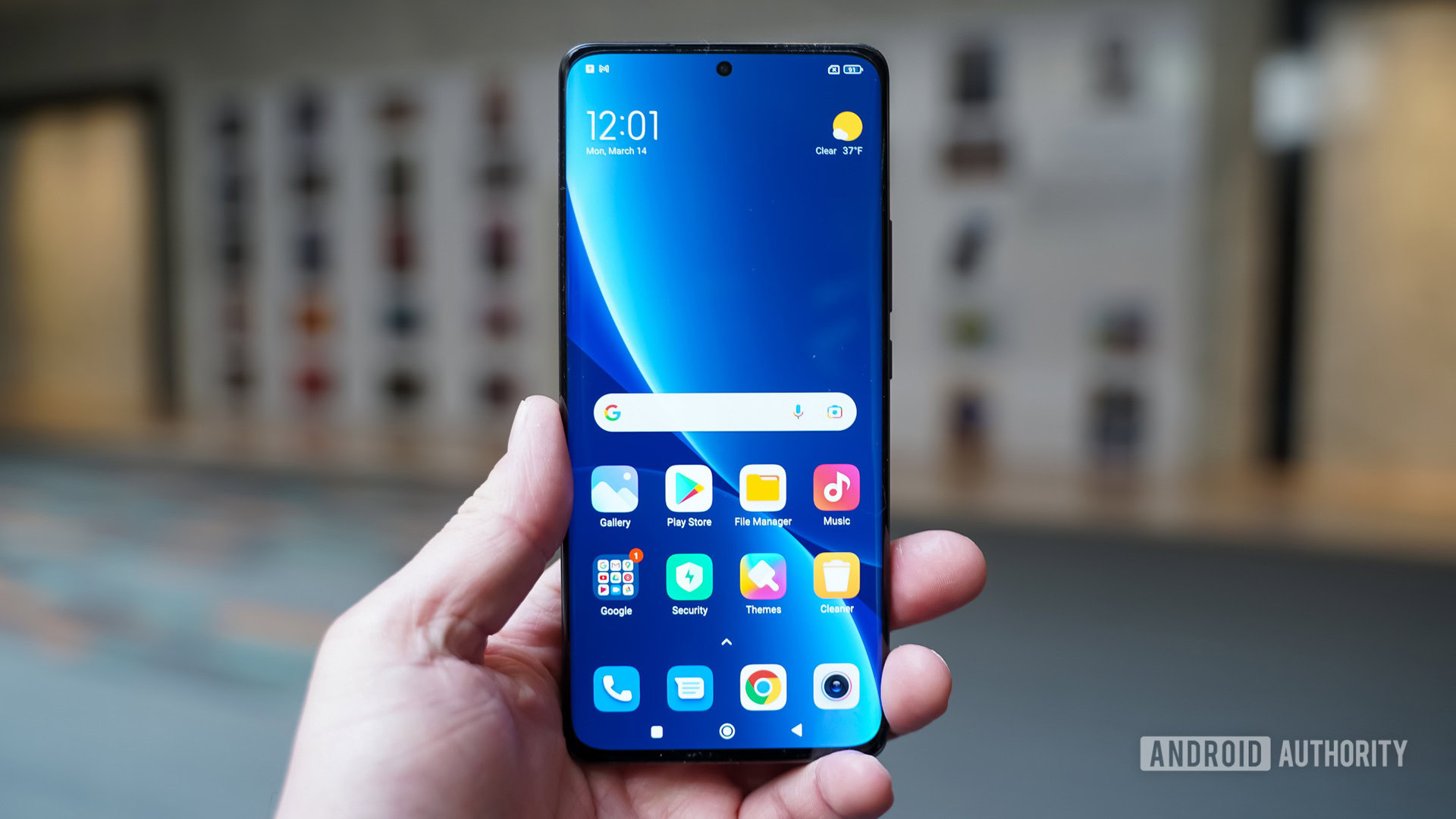
- Xiaomi 12 Pro (8GB/256GB): €999
- Xiaomi 12 Pro (12GB/256GB): €1,099 / £1,049
The Xiaomi 12 Pro is part of a family of devices from the phone maker, which also includes the smaller Xiaomi 12 and the Xiaomi 12x. Xiaomi hasn’t announced an “ultra” model for the 12 series as it did with last year’s Mi 11 series, though there is a Xiaomi 12S Ultra. Unfortunately, the entire Xiaomi 12S line is China-exclusive, so as it stands the Xiaomi 12 Pro serves as the brand’s top-of-the-line device. As such, it’s going up against some of the best Android smartphones from Samsung and Google, and competition from Apple, and others. In other words, Xiaomi has a lot to prove in order to keep up with the “pro” competition.
Xiaomi is offering just two versions of the phone. Both have 256GB of storage and you can select between 8GB or 12GB of RAM. The phone is available in three colors: Graphite, Blue, and Purple.
The Xiaomi 12 series was initially launched to the Chinese market but is now widely available in international markets, including Africa, Europe, Latin America, the Middle East, and Southeast Asia. Despite initially revealing the phone’s price in US dollars at launch, Xiaomi does not plan to sell the phones in the US directly, so you’ll need to import one from an online retailer if you really want one. Prices in Europe varies a bit depending on the market. Buyers in the UK only get the higher-spec 12GB model, where it’s available through Xiaomi’s online store, carriers Vodafone and Three, as well as Amazon, Currys, Argos, and Very.
Is the design premium enough?
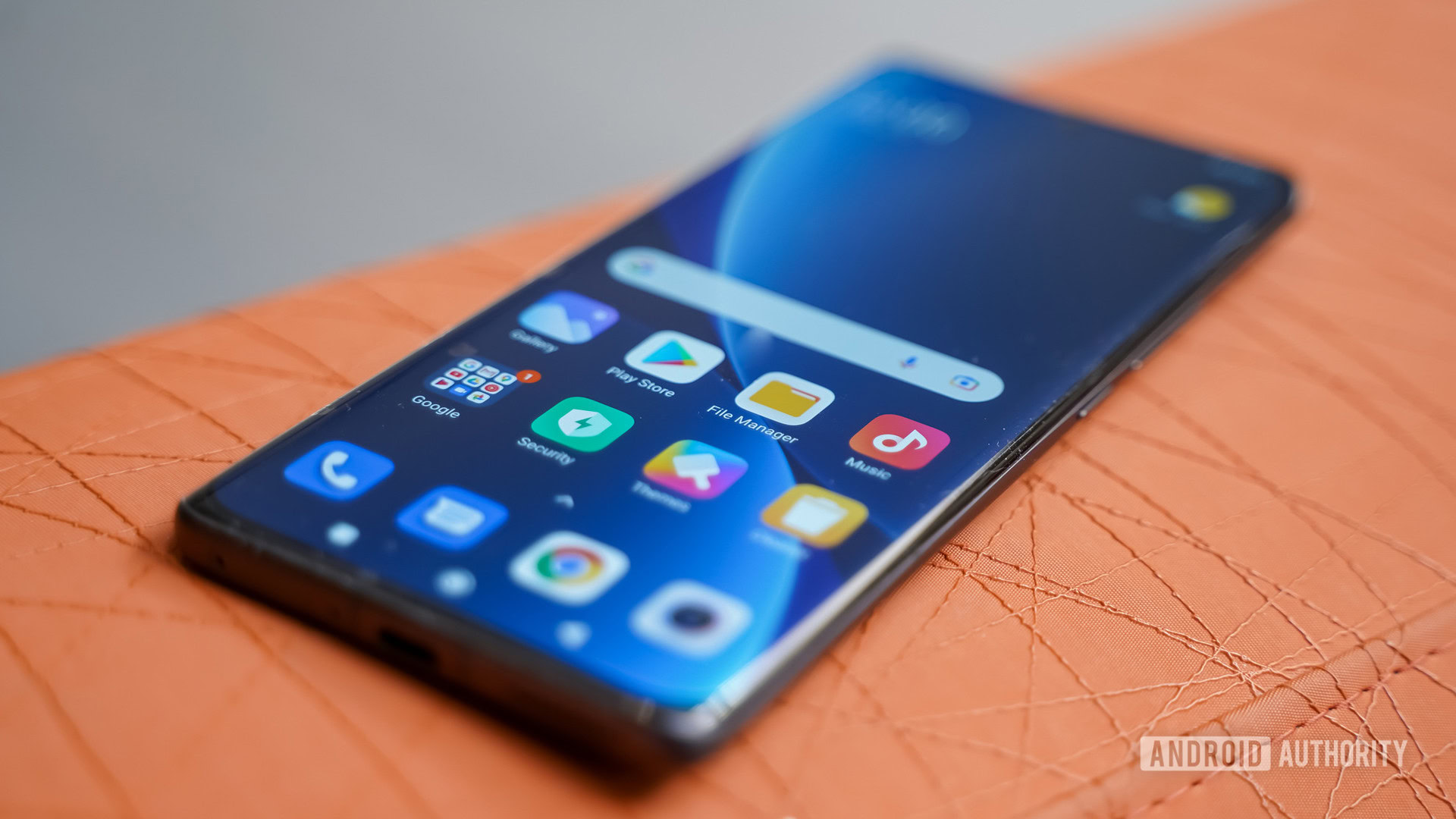
Xiaomi didn’t stray far from its conservative corporate design language with the 12 Pro. If you look at Xiaomi’s current range of devices, you’ll easily note the similarities between them, and that includes its Redmi sub-brand. In other words, the Xiaomi 12 Pro perhaps doesn’t stand out as much as it should given the fine company it wants to keep. Other phones in this price range have a bit more personality and sometimes that matters more when looking at the devices at your local wireless shop.
The Xiaomi 12 Pro is a classic metal and glass sandwich. The aluminum mid-frame runs thin along the side rails but expands where it forms the top and bottom edges of the phone. The front, which is Gorilla Glass Victus, features a fairly aggressive curve on the sides where it bends to meet the metal frame. The Gorilla Glass 5 rear panel has a similarly aggressive curve. I appreciate the smooth contour this creates. Combined with the rounded metal frame and soft corners, you have a piece of hardware that’s comfortable to hold and use throughout the day. It’s a bit of a shame we’re not getting Corning’s Victus glass all over to keep up with the phone’s competitors, though putting a case on it will offer some extra protection.
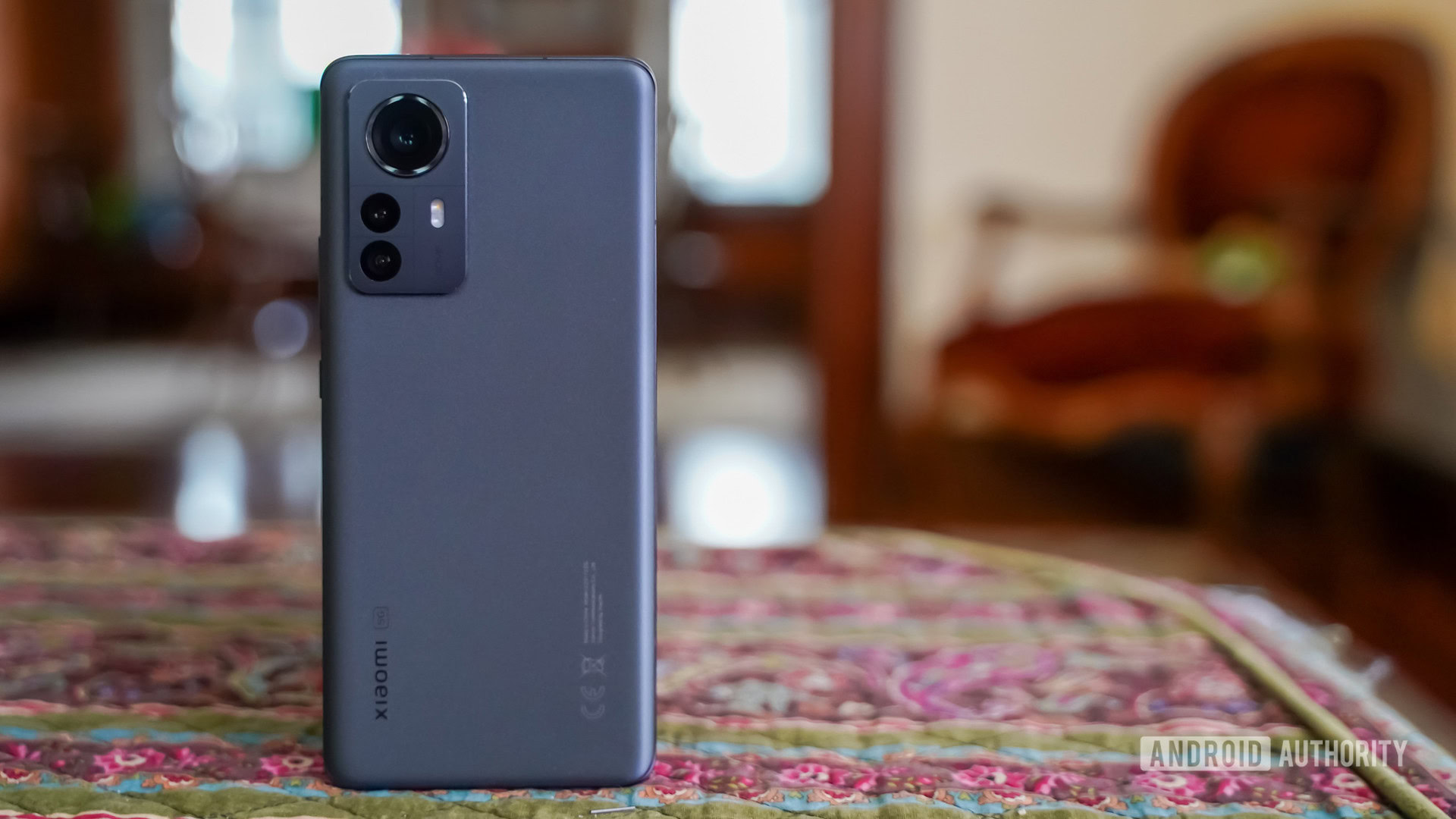
The materials and quality of the phone are great, but not quite perfect. The front glass and metal frame are manufactured perfectly and fit together tightly. The rear panel has a matte coating on it to lend a little bit of texture and prevent fingerprints from marring the surface. This has the unfortunate side effect of feeling like plastic, which drags down the impression of the phone in a big way. A metal and glass sandwich that costs just shy of €1,000 should feel like a metal and glass sandwich.
The Xiaomi 12 Pro is solidly built, but lacks a premium edge.
Xiaomi lent us the Graphite colorway of the phone. The frame has a nice paint color to it and the shade of the matte rear panel is pleasingly subtle. The Purple and Blue colorways stand out just a touch more as far as looks go.
The Xiaomi 12 Pro doesn’t mix things up for the essentials. The power button and volume rocker are both annoyingly thin, although they have excellent action. The USB-C port is centered on the bottom edge and the phone’s SIM tray is to the port’s left. The tray has two slots for dual-SIM capabilities, but not memory cards. Matching speaker grilles are found top and bottom.
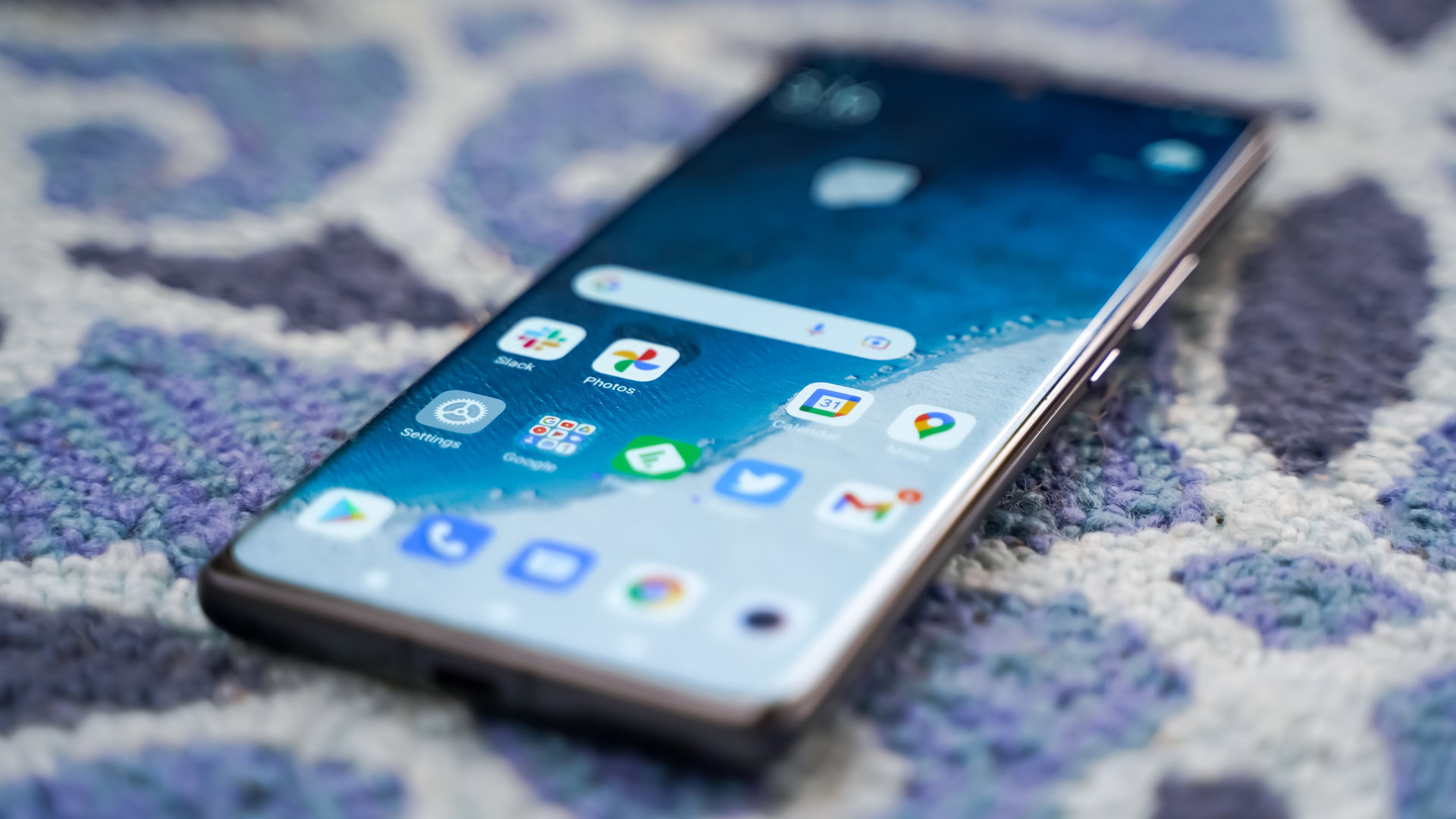
Xiaomi overhauled the design of the camera module to something a little more sophisticated despite its large size. The shape of the Mi 11’s module had just a bit of whimsy to it thanks to the layered look. The Xiaomi 12 Pro’s camera module looks more utilitarian with its segmented rectangular shape. The main camera has a significant raised lens with a reflective rim which makes it really stands out. The secondary cameras are less visible thanks to the smaller profiles that are blended into the surface of the module itself.
Xiaomi failed to include one vital feature that has us scratching our heads a bit: An IP rating.
The phone’s haptic motor does a good job. I appreciated the fine-tuned vibrations that were subtle yet strong enough to get my attention when desired.
Xiaomi failed to include one vital feature that has us scratching our heads a bit. The phone does not have an IP rating, meaning it is not officially secured against dust and water, as many of its competitors are. While Xiaomi told Android Authority that the phone is “protected from limited dust ingress and water spray,” it’s still the case that the majority of €1,000 flagships have been certified with an IP68 rating for standardized testing against submersion in water. This is a major misstep for a 2022 flagship, especially with Xiaomi’s increased asking price over its predecessors.
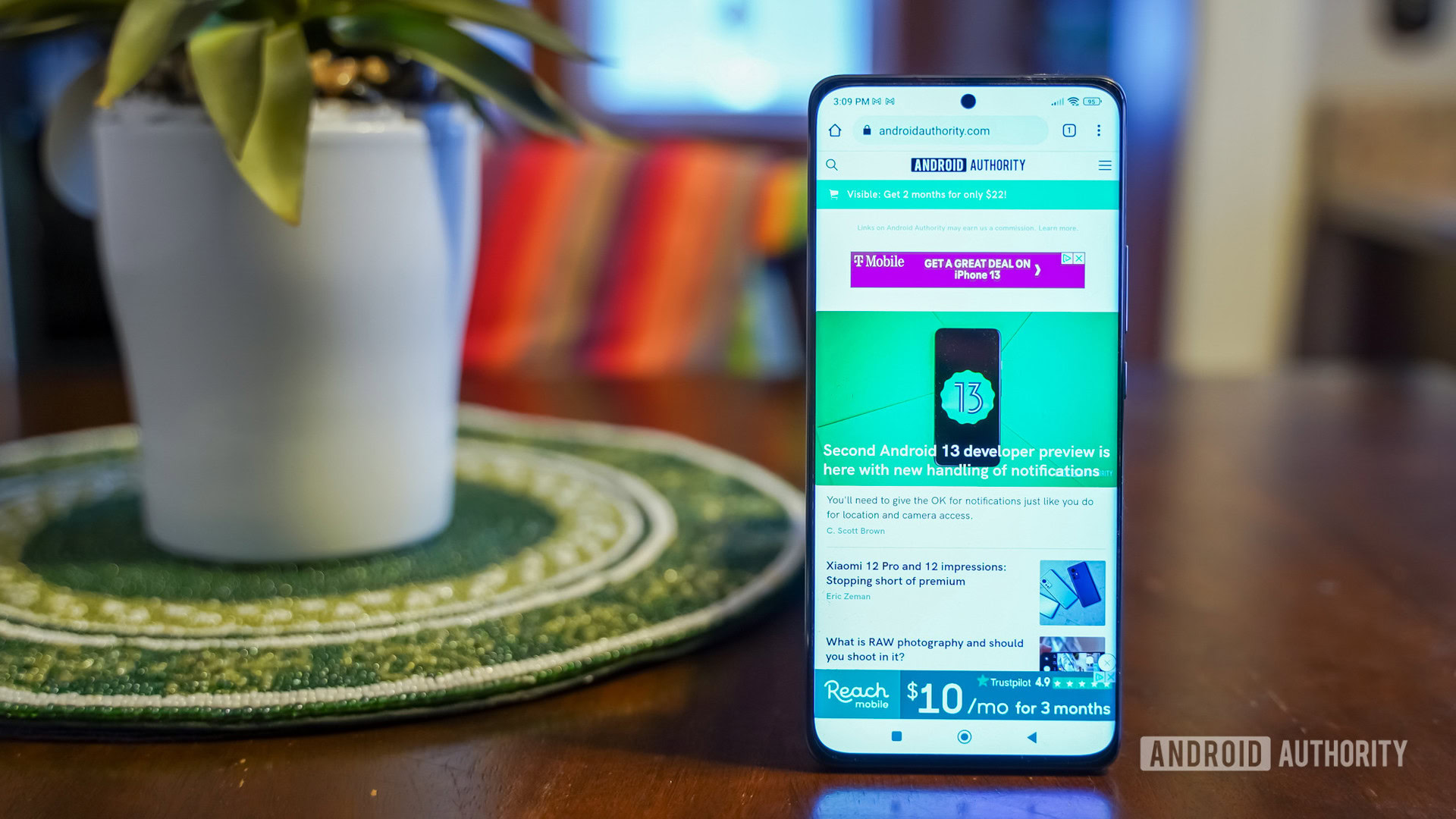
The Xiaomi 12 Pro is an average-looking phone that does little to stick out visually. Perhaps some buyers prefer boring, but I’d like a little more individuality from such a pricey piece of hardware. Moreover, the plasticky feeling of the rear panel and the missing IP rating take away from what could have been a true premium experience.
How does the screen look?
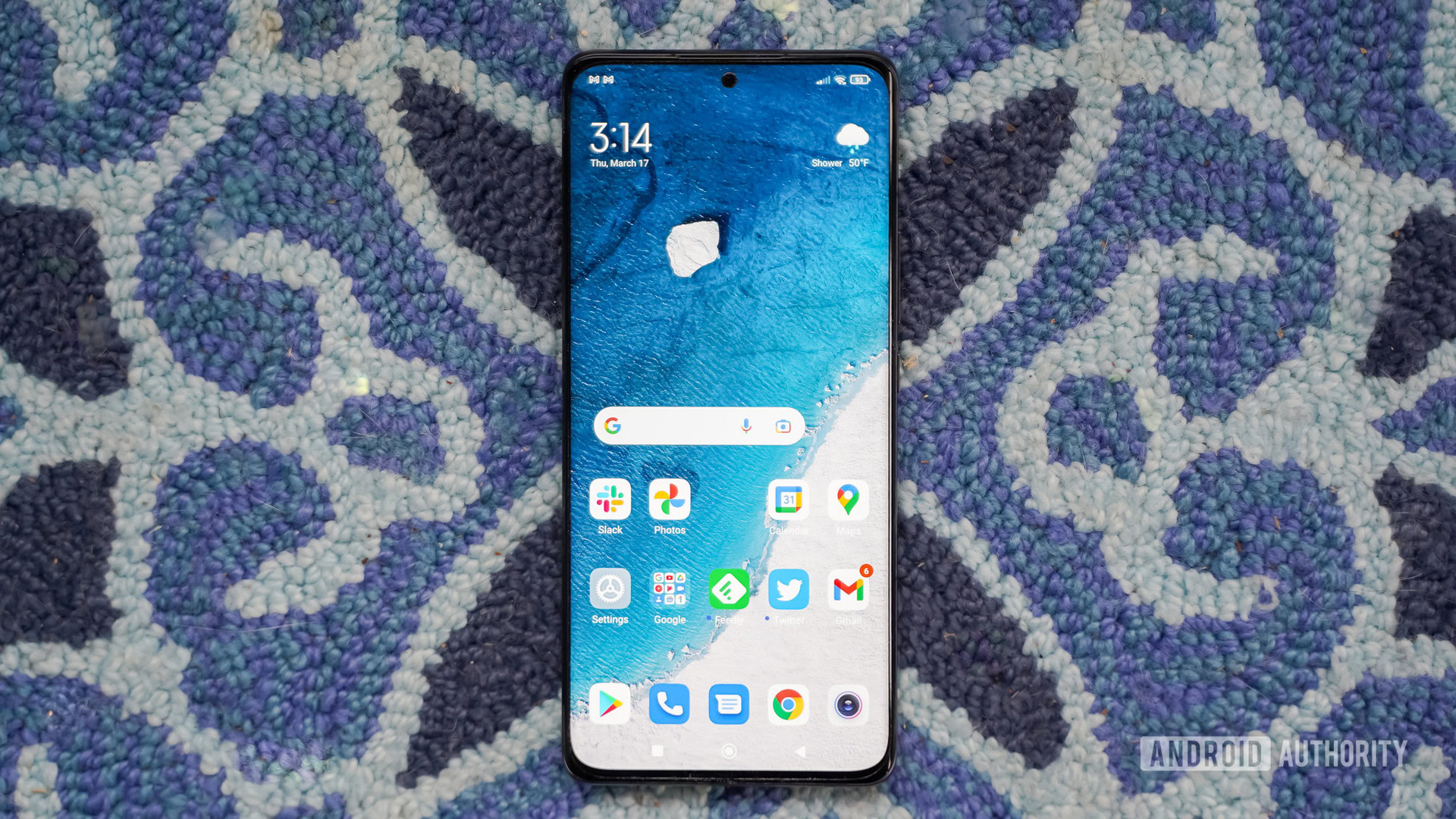
The Xiaomi 12 Pro has the right screen technology and the right series of features in order to ensure it offers a competitive display in the flagship market.
The LTPO AMOLED screen is a smidgen smaller than the screens on the non-Ultra Mi 11 series, but it otherwise carries over most of the same specs and performance. It measures 6.73 inches across the diagonal and packs 3,200 x 1,440 pixels in a 20:9 aspect ratio. The tall aspect ratio of the screen combined with the curved side edges gives it a nearly bezel-less look. The resolution and pixel density (522ppi) are both among the highest at this price point and provide fantastically sharp elements on the screen.
Xiaomi may have dialed back the screen’s size, but it upgraded the display’s brightness and contrast ratio year over year. For example, Xiaomi says brightness is improved from 900 nits to 1,000 nits, with peak brightness reaching 1,500 nits. Further, the contrast ratio is boosted from five million to one in the Mi 11 to eight million to one in the Xiaomi 12 Pro. You also get HDR 10 Plus, Dolby Vision, and TrueColor support. These add up to a brilliant screen that can really dazzle. I had no trouble seeing the screen indoors or outdoors, even under the full glare of the sun. High-res video content from Netflix and Disney Plus looked excellent on the display.
Like many screens in the flagship space, the Xiaomi 12 Pro supports a refresh rate of up to 120Hz, which it’s set to by default out of the box. It’s a variable rate and bounces between 10Hz, 60Hz, and 120Hz depending on what you’re doing, in order to conserve power or offer up improved performance. Scrolling action looked particularly smooth on the screen. The screen also supports a touch sampling rate of up to 480Hz, which means the display responds faster to touch input. This is especially handy for gamers, which is why it’s only active when the Game Turbo setting has been activated during gameplay.
The Xiaomi 12 Pro has a brilliant screen that can really dazzle, but it's not quite perfect.
The phone carries over the Super Resolution upconverter that was available on last year’s Mi 11. This tool improves SD content to HD, and HD content to WQHD+. The idea is to make it more enjoyable to watch older videos that were recorded at lower resolutions. A quick spin through old YouTube content convinced us that it’s worth using with low-res stuff when possible. Xiaomi’s display management software also makes it possible to take full control of the screen’s settings. You can adjust resolution, brightness, light/dark mode, refresh rate, color profiles, and more.
There are a couple of small problems with the screen, however. First, we noticed that it has a very slight reddish tint to it. This is only noticeable when the phone is held next to another device and you’re viewing white content on both screens. You probably won’t notice, but it’s definitely there. Second, viewing angles aren’t the best. There’s an obvious blue shift when you tilt the phone. These aren’t dealbreakers, but they prevent the display from being truly excellent.
On another slightly sour note, the Xiaomi 12 Pro ships with a low-quality screen protector applied. It started peeling off after just a few days with the phone in my testing, though you may get more mileage out of it if you’re extra careful.
Xiaomi dialed in a good combination of capabilities for the 12 Pro’s screen. Despite the small flaws, it is a very good screen that is still in the same league as its peers.
Is battery life good enough?
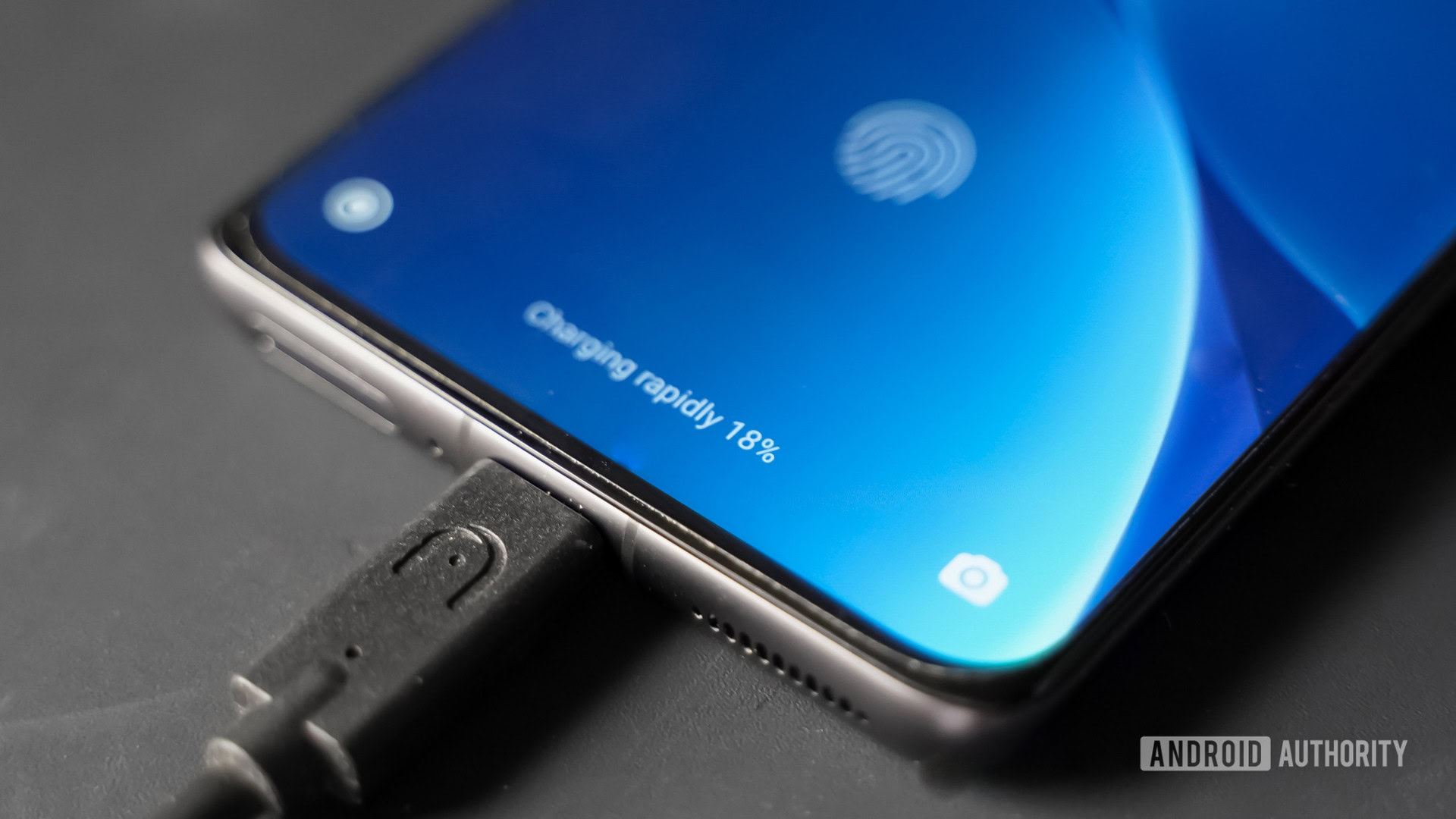
Many of the Xiaomi 12 Pro’s competitors are packing 5,000mAh batteries, which leaves the phone’s 4,600mAh power cell feeling a little short in comparison. The company is pinning its hopes on one thing to offset this difference: ludicrous charging speeds.
The Xiaomi 12 Pro’s battery does well in daily use, but it could certainly be better. Using the phone throughout the day for email, social media, browsing the web, and some media playback saw the battery reach the ~20% mark just as I was getting ready for bed. This was consistent over the course of a week with the phone. Hitting ~20% so often left me a little worried in later evenings and the phone never pushed beyond breakfast of the following day.
The 12 Pro's battery does well in daily use, but it could certainly be better.
Thankfully, there are myriad ways to manage and control the battery. The Xiaomi 12 Pro ships with the display’s 120Hz refresh rate on, but you can sacrifice that smoothness for a little more juice by setting it to a fixed 60Hz. You could also dial back the screen resolution, throttle the processor’s performance, kill off background tasks more aggressively, and so on.
While those tools do work to help extend battery life, it’s clear Xiaomi simply expects you to take advantage of the phone’s rapid charging powers. The Xiaomi 12 Pro supports 120W wired charging via Xiaomi’s proprietary HyperCharge tech. Moreover, the phone ships with the 120W wired charger in the box. It’s an enormous brick and is quite heavy; I wouldn’t want to carry it around all day. With the Standard charging mode (which is the default), the Xiaomi 12 Pro took about 30 minutes to reach a full charge from 10%. With Boost mode enabled (which you have to switch on in the battery’s settings), the 12 Pro took about 20 minutes to recharge fully from 10%. Either way, that’s incredibly quick. And, surprisingly, the Xiaomi 12 Pro didn’t get warm while topping up.
Xiaomi didn’t forget about wireless charging. The phone supports rapid wireless charging at rates up to 50W through Xiaomi’s own charging technology. Xiaomi claims the phone can reach a full charge in 42 minutes via 50W wireless charging, though you won’t be able to take advantage of these speeds — the wireless charger isn’t available outside of China. Thankfully, it also supports Qi wireless charging, though our 18W wireless charging pad required closer to 80 minutes to recharge the Xiaomi 12 Pro. Reverse wireless charging is available at 10W for powering up your accessories, such as wireless headphones. This feature worked fine, and 10W is double the speed most phones offer.
I wish the Xiaomi 12 Pro’s battery life were a smidgen better. With the phone falling just below a quarter so consistently after a typical day’s use, I worry days that require more extensive use will see the phone die off much earlier. Competing flagships from Samsung, Google, and Apple do better on average, though they are much slower to recharge. At least Xiaomi is doing everyone the favor of including the proprietary rapid charger in the box.
How powerful is the Xiaomi 12 Pro?
In step with nearly every other early 2022 flagship smartphone, the Xiaomi 12 Pro ships with a Qualcomm Snapdragon 8 Gen 1 system on a chip. Off the bat, however, we’d prefer more RAM and storage combinations were available. The Xiaomi 12 Pro is only available in 8GB/256GB and 12GB/256GB variations (we tested the latter), with no room for expandable storage. With the notable exception of the Galaxy S22 Plus, Xiaomi’s competitors are offering more options out the door, which may give them a leg up for buyers who want to pack their phones with 4K movies and tons of apps and games.
The phone ran really well over the course of a week. Everything about its normal, everyday performance was speedy and smooth. The device didn’t run into any hiccups with apps, multitasking, or other features. It capably handled intense racing games just as well as simple puzzle games and frame rates were consistent throughout.
Benchmark results exceeded those of the few other 8 Gen 1 phones we’ve tested, including the Samsung Galaxy S22 Ultra and OPPO Find X5 Pro (even with the latter in Performance Mode). That’s a notable achievement, but I do, however, have to call into question Xiaomi’s claims about the 12 Pro’s new cooling system.
The Xiaomi 12 Pro sets a benchmark for Qualcomm's chip but it runs hot — hotter than any other 8 Gen 1 phone.
Xiaomi says the phone has “three large heat dissipation graphite sheets” to help with thermal management, but I found that the Xiaomi 12 Pro runs hot — hotter than any other 8 Gen 1 phone I’ve tested. It heated up significantly running benchmarks, which can be typical for some phones, but it also heated up in a big way after playing graphics-rich games. The heat on the rear panel was often noticeable to the touch too. It appears this heat is the trade-off you get for such high performance from the processor.
How good is the Xiaomi 12 Pro’s camera?
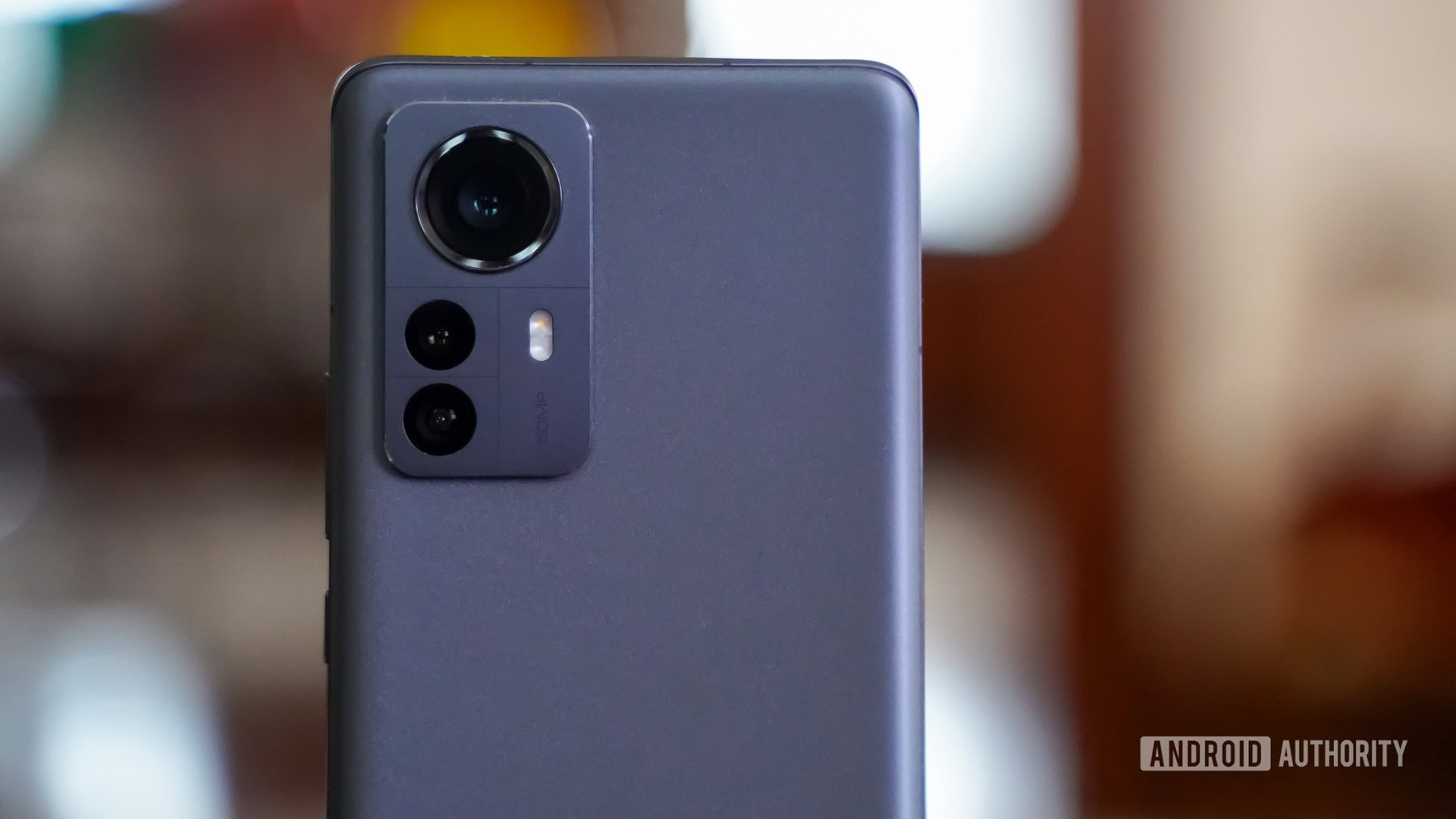
Xiaomi wholly reimagined the camera system of the 12 Pro and that’s mostly a good thing. Chiefly, there’s no near-useless telemacro lens like we saw on the Mi 11. Instead, this time around we get a non-Ultra Xiaomi flagship you can buy globally with an actual telephoto camera. Moreover, it updated the hardware all around, giving each camera a 50MP sensor of its own.
The main camera has a Sony IMX707 sensor with a large seven-element lens at f/1.9. Xiaomi bins the 50MP sensor down by a factor of four, creating 12.5MP images with an effective pixel size of 2.44μm. This enables shooting modes such as Ultra Night and Portrait Night. The ultrawide camera has a 115-degree field of view and an aperture of f/2.2, while the telephoto has an equivalent lens of 48mm and an aperture of f/1.9. These two additional cameras rely on smaller Samsung sensors, though they still produce binned 12.5MP shots. If you wish, you can take full 50MP images with all three cameras.
The Xiaomi 12 Pro excels at regular daytime photography. Shots I captured outside during sunlight hours looked really good. Focus was sharp, exposure was solid, and white balance was accurate. Some photos came across as a little dull, but the majority were pleasing.
Using the zoom picker in the camera app, you can jump out to the 0.6x ultrawide camera. Here, things take a bit of a turn. This camera has fixed focus and thus shots are, in general, less sharp when compared to the main camera. There’s plenty of distortion around the edges, even when you apply the distortion correction tool. The good news is that exposure is about on par with the main camera, though the color doesn’t quite match, which you can plainly see in the green paper of the shots below.
The Xiaomi 12 Pro’s zooming capabilities are not quite straightforward when compared to other phones at this price point. The telephoto camera, which technically offers 2x optical zoom over the main camera, only kicks in when you’re shooting in broad daylight or in other scenes with really bright lighting. The telephoto camera also activates when using the Portrait and Supermoon modes, and it can be manually selected in the Pro mode. If the lighting is iffy at all, the 12 Pro instead relies on the main camera for zoom instead so it can capture more light. We’ve seen plenty of other phones do this, and when you’re actually shooting in low light, the digitally zoomed main camera does produce sharper, brighter shots. However, Xiaomi’s implementation is quite aggressive and occasionally switches away from the telephoto lens even in perfectly acceptable lighting.
The real downer, though, is that Xiaomi’s competitors offer phones with 3x optical zoom lenses or greater. A maximum of 2x optical zoom just isn’t quite as useful for long-distance snaps. Below are three shots created by the ultrawide, wide, and telephoto lenses via the phone’s Pro mode — note the wide differences in color balance.
The phone can zoom digitally up to 20x. Shots zoomed in the 2x to 5x range look fairly good, though there’s some noise. As we can see below, anything above 5x really starts to deteriorate with soft focus and lots more noise. If killer zoom is a must-have, you’ll have to look elsewhere.
Using any of the cameras in low light or at nighttime reveals the limitations of Xiaomi’s image processing. Shots taken indoors, for example, showed low dynamic range and were noisy. Shots I snagged after dark were rather flat and not near the quality you’ll get from some competing phones. This applies whether or not you use the Night shooting mode. You can see in the shot of the house that the phone barely picked up any detail at all.
Xiaomi gave the 12 Pro a 32MP selfie camera, which is tucked into a punch hole opening at the top of the display. This camera also bins down by a factor of four, so you get 8MP images with an effective pixel size of 1.4μm. Like the main camera, the selfie camera does a good job when there’s plenty of light, though it equally suffers some in low light. Selfies were definitely soft and more grainy in the evenings. Portraits produce reasonable edge detection and pleasing bokeh, but the beautification mode is turned on by default. You’ll need to dial it back if you prefer a more natural look. There’s also a Night Selfie mode, but as you can see in the sample below it’s not capable of making magic out of nighttime selfies.
You can record video up to 8K at 24fps with the main camera. I like that HDR capture is available up to resolutions of 4K. The selfie camera is limited to 1080p video capture, which is a lower resolution than competing flagships. You can enable stabilization if you wish, as well as dial in your preferred level of bokeh when shooting via the main camera. There are also some “AI-assisted” video modes such as time freeze, slow shutter, and magic zoom that produce various cinematic effects.
Video from the Xiaomi 12 Pro looks really good. Clarity was excellent, as was color and exposure. Even without the stabilization feature turned on, the footage I got was free of shakes and awkward motion. Turning stabilization on will reduce the field of view a little bit, but it means you can capture steady video without a gimbal. I found recording 4K at 60fps with HDR turned on delivered the best results. The 1080p video you’ll get from the selfie camera isn’t quite as impressive in terms of clarity or color, but it’s at least passable.
The Xiaomi 12 Pro's camera is good but it falls short of the bar set by competitors.
Overall, the Xiaomi 12 Pro’s camera is good but it falls short of the bar set by the best camera phones available. Xiaomi’s main competitors offer better optical telephoto zoom, less noise in low-light situations, and more appealing color presentation. People who want the absolute best in terms of mobile photography should plan on an alternative to the Xiaomi 12 Pro, but it’s a competent enough shooter.
You can view full-resolution photo samples in this Google Drive folder.
Anything else?
- Software: The Xiaomi 12 Pro ships with Android 12 out the door with MIUI 13 on top. Xiaomi’s user interface skin is a bit more heavy-handed than others. Sometimes less is more and this is a lesson Xiaomi seems determined to ignore. Nevertheless, there’s plenty to like, including the customization options and the app switcher, which lets you see at least four open apps at a time. But there are definitely some head-scratching decisions, such as the treatment of the Settings menu (why are there category dividers taking up space?) and the way Xiaomi wants people to swipe down from the top of the screen to see notifications and the Quick Settings toggles. In very iOS style, you have to swipe from the left side of the screen for notifications and the right side of the screen for the toggles. You also get a handful of bloat Xiaomi apps, such as a video player and social network. These can be disabled, but not uninstalled. There’s also no sign of Android 12’s Material You theming. The animations are nice, however, and MIUI 13 runs well on the phone. Xiaomi is set to roll out MIUI 14 to the Xiaomi 12 in Q1 2023.
- Updates: Xiaomi upgraded its device update policy and that’s good news for Xiaomi 12 Pro owners. The company has committed to offering three years of OS updates and four years of security updates for the Xiaomi 12 series. This is on par with what most OEMs now provide for flagships, though it falls behind Google and especially Samsung.
- Audio: The Xiaomi 12 Pro has quad speakers that have been tuned by Harmon Kardon and support Dolby Atmos. I spent a great deal of time listening to music via the Xiaomi 12 Pro while writing this review and can say that they sound very good, though they stop short of being excellent. The dynamic range is solid and the speakers can get plenty loud. Clarity is the biggest issue, as the phone tends to sound muddled in the low end from time to time. The speakers of other phones I have on hand came across as a bit cleaner. There’s no headphone jack, but the 3.5mm port has all but disappeared from Xiaomi’s flagship phones
- Connectivity: Xiaomi gave the 12 Pro reasonably good support for sub-6GHz 5G bands, but there’s no mmWave on board due to the lack of US availability. It doesn’t pack quite as many bands as phones like the Galaxy S22 or the OnePlus 10 Pro, but it covers a number of 5G deployments in the regions served by this model. In the US, we popped in a T-Mobile SIM and the phone connected to 5G just fine. The phone made each call on the first try but did fail to send SMS messages on occasion. Regardless of the phone’s performance on T-Mobile, this model isn’t optimized for use in the US, so be sure to check your carrier bands first. Elsewhere, it has Bluetooth 5.2 on board, and I had no trouble connecting the 12 Pro to multiple accessories. The phone handled an all-day-long connection to headphones with no problem. There’s a little bit of confusion about what Wi-Fi spec is supported by the phone, however. The fact sheet from Xiaomi says the phone supports Wi-Fi 6 and Wi-Fi 6E, but that it varies by region and an over-the-air update may be necessary to activate it. We can tell you that the 12 Pro connected to several different Wi-Fi networks with ease and provided solid performance as we tested the phone.
- Biometrics: You’ve got your basic biometrics here. The Xiaomi 12 Pro includes an in-display fingerprint scanner. It was as easy to train as any other fingerprint reader I’ve used. I like that you can elect to show or not show the reader on the display. The scanner is positioned in a reachable spot and worked consistently to unlock the phone when touched. I’d call it just a little slow and the haptic feedback generated by the reader is perhaps too much. A simple facial recognition feature is available too, though it’s software-based so it isn’t as secure as a pattern or PIN would be. That said, getting it to recognize my face was a breeze but it was not quick or consistent enough to use as a regular screen lock.
Xiaomi 12 Pro specs
| Specs | Xiaomi 12X | Xiaomi 12 | Xiaomi 12 Pro |
|---|---|---|---|
| Specs Display | Xiaomi 12X 6.28-inch AMOLED display FHD+, 2,400 x 1,080 120Hz refresh rate 480Hz touch sampling rate Dolby Vision, HDR 10+ support | Xiaomi 12 6.28-inch AMOLED display FHD+, 2,400 x 1,080 120Hz refresh rate 480Hz touch sampling rate Dolby Vision, HDR 10+ support | Xiaomi 12 Pro 6.73-inch AMOLED display WQHD+, 3,200 x 1,080 120Hz refresh rate 480Hz touch sampling rate Dolby Vision, HDR 10+ support |
| Specs Processor | Xiaomi 12X Qualcomm Snapdragon 870 | Xiaomi 12 Qualcomm Snapdragon 8 Gen 1 | Xiaomi 12 Pro Qualcomm Snapdragon 8 Gen 1 |
| Specs Memory | Xiaomi 12X 8GB | Xiaomi 12 8GB 12GB | Xiaomi 12 Pro 8GB 12GB |
| Specs Storage | Xiaomi 12X 256GB | Xiaomi 12 128GB 256GB | Xiaomi 12 Pro 256GB |
| Specs Battery | Xiaomi 12X 4,500mAh 67W wired turbo charging 50W wireless turbo charging 10W reverse wireless charging | Xiaomi 12 4,500mAh 67W wired turbo charging 50W wireless turbo charging 10W reverse wireless charging | Xiaomi 12 Pro 4,600mAh 120W wired turbo charging 50W wireless turbo charging 10W reverse wireless charging |
| Specs Camera | Xiaomi 12X Rear: -50MP main camera f/1.88, 6P lens, 2µm 4-in-1 Super Pixel -13 MP ultra-wide camera 123˚ FOV, f/2.4 -5MP telemacro camera 50mm equivalent focal length, Auto Focus Front: -32MP selfie camera f/2.45, 1.4µm 4-in-1 Super Pixel | Xiaomi 12 Rear: -50MP main camera f/1.88, 6P lens, 2µm 4-in-1 Super Pixel -13 MP ultrawide camera 123˚ FOV, f/2.4 -5MP telemacro camera 50mm equivalent focal length, Auto Focus Front: -32MP selfie camera f/2.45, 1.4µm 4-in-1 Super Pixel | Xiaomi 12 Pro Rear: -50MP main camera f/1.9 1/1.28-inch 7P lens 2.44 μm 4-in-1 Super Pixel -50MP ultrawide camera 115° FOV, f/2.2 -50MP telephoto camera 48mm equivalent focal length, f/1.9 Front: -32MP selfie camera f/2.45, 1.4µm 4-in-1 Super Pixel |
| Specs Video | Xiaomi 12X 4K recording 8K recording | Xiaomi 12 4K HDR 10+ recording 8K recording | Xiaomi 12 Pro 4K HDR 10+ recording 8K recording |
| Specs Connectivity | Xiaomi 12X Dual SIM Dual 5G standby NFC Bluetooth 5.1 Wi-Fi 6 | Xiaomi 12 Dual SIM Dual 5G standby NFC Bluetooth 5.2 Wi-Fi 6/Wi-Fi 6E (Based on regions) | Xiaomi 12 Pro Dual SIM Dual 5G standby NFC Bluetooth 5.2 Wi-Fi 6/Wi-Fi 6E (Based on regions) |
| Specs Ports | Xiaomi 12X USB-C | Xiaomi 12 USB-C | Xiaomi 12 Pro USB-C |
| Specs Durability | Xiaomi 12X Gorilla Glass Victus | Xiaomi 12 Gorilla Glass Victus | Xiaomi 12 Pro Gorilla Glass Victus |
| Specs Operating system | Xiaomi 12X MIUI 13 with Android 11 | Xiaomi 12 MIUI 13 with Android 12 | Xiaomi 12 Pro MIUI 13 with Android 12 |
| Specs Dimensions | Xiaomi 12X 152.70mm x 69.90mm x 8.16mm | Xiaomi 12 152.70mm x 69.90mm x 8.16mm | Xiaomi 12 Pro 163.60mm x 74.60mm x 8.16mm |
| Specs Weight | Xiaomi 12X 176g | Xiaomi 12 180g | Xiaomi 12 Pro 205g |
| Specs Colors | Xiaomi 12X Gray Purple Blue | Xiaomi 12 Gray Purple Blue | Xiaomi 12 Pro Gray Purple Blue |
Value and competition
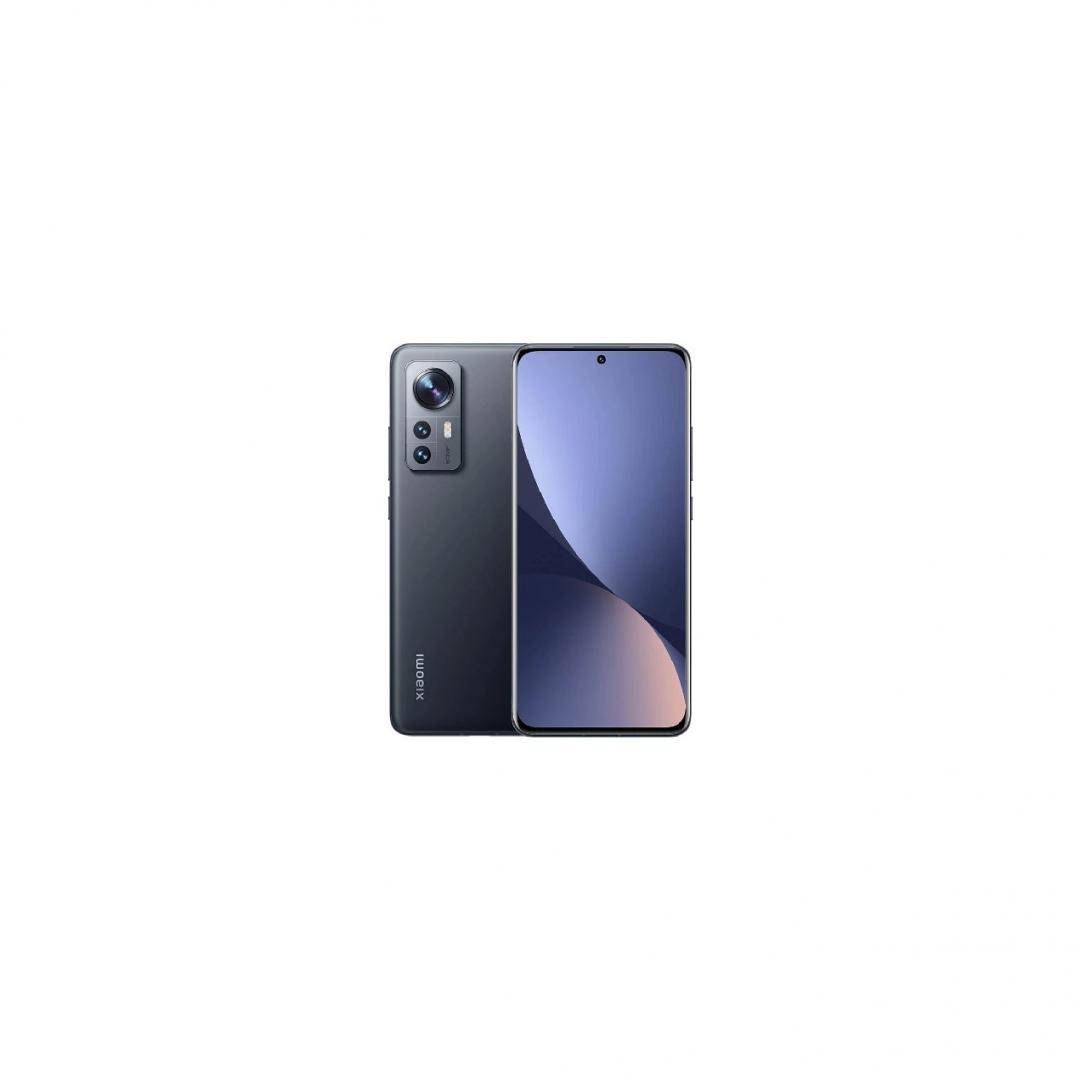
Xiaomi has a tough sell on its hands here. Given how the Xiaomi 12 Pro behaved over the course of a week of testing, it’s clear to us that unless you really want to show off the best benchmark numbers, the phone isn’t quite up to the same level as other $1,000 flagships. It tries really hard, but doesn’t close the gap in the way Xiaomi likely hoped it would.
The €999 starting price for the 8GB/256GB Xiaomi 12 Pro seems at least €100 high considering the phone’s plasticky feel, missing IP rating, worrying battery life, and the quirks with the camera setup. The 12GB/256GB model will cost €100 more, and as the only option in the UK for £1,049, that’s a big ask for a phone with this many caveats. Either way, you will probably get more for your money if you consider a competing phone.
Xiaomi’s new flagship, the Xiaomi 13 Pro (£1099.99 at Amazon) rights many of the wrongs of its predecessor. Build quality is now on par with Android’s best, while battery life, sustained performance, and the camera system are all marked positives. However, it’s not widely available in the US, so finding it could prove to be as difficult as the Xiaomi 12 Pro.
Thankfully, there are other alternatives from the usual suspects. Even though the Galaxy S22 Plus was the Xiaomi 12 Pro’s closest challenger at launch, the new Samsung Galaxy S23 Plus ($999.99 at Samsung) is now its most direct competitor to the Xiaomi 12 Pro in terms of size, specs, and capabilities. It has more premium hardware, an IP rating, better battery life, better software, and a better camera suite. It’s really, really hard to beat. If you want the best device Android can offer, you could spend $200 more on the Samsung Galaxy S23 Ultra ($1199.99 at Samsung) though it comes at the expense of usability due to its larger size. If you want the same premium Samsung experience in a smaller package, there’s always the Samsung Galaxy S23 ($799 at Amazon). You get a smaller screen and battery, but the core of the Galaxy S23 Plus experience remains.
Unfortunately for Xiaomi, you will probably get more for your €999 if you consider a competing phone.
The Google Pixel 7 Pro ($589.98 at Amazon) also manages to exceed the Xiaomi 12 Pro in terms of premium feel, waterproofing, and camera powers. It is larger and heavier than the 12 Pro, but that may be a small price to pay considering the top-shelf photography suite and cheaper price. Speaking of cheaper, the Google Pixel 7 ($545 at Amazon) is arguably the best value phone on the market right now and retains a lot of what makes the Pixel 7 Pro special for a much lower price.
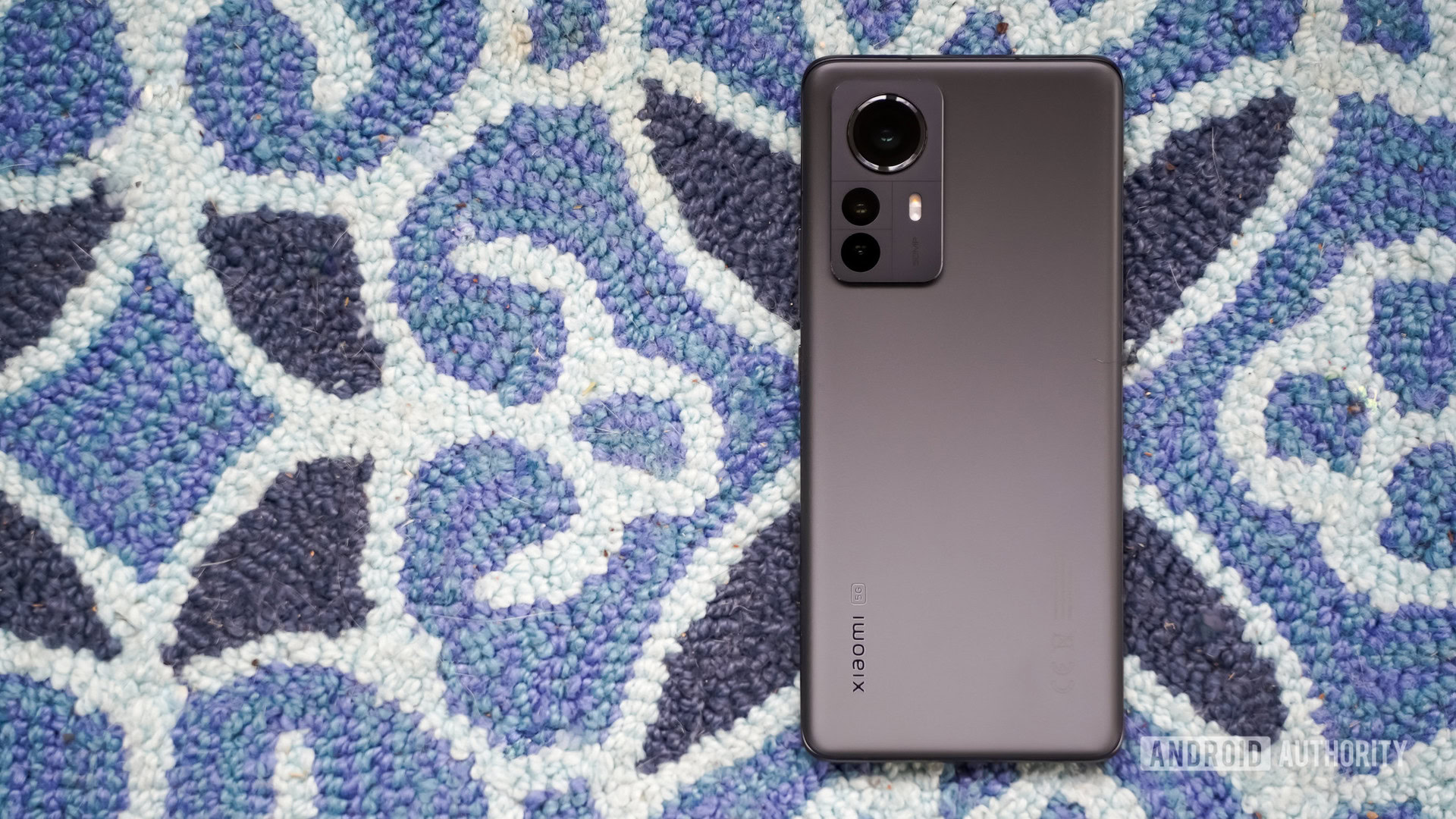
The OPPO Find X5 Pro ($999 at Amazon) is another good alternative for those looking for something with a bit of personality. The Find X5 Pro also has an improved battery when compared to the 12 Pro and it costs the same.
A final solid Android competitor to the Xiaomi 12 Pro is the OnePlus 11 ($1296 at Amazon). It’s quite a bit cheaper, though it’s not without some reservations, especially its lack of wireless charging and mediocre camera performance.
There are other Xiaomi 12 series phones to consider as well. Both the Xiaomi 12 ($469 at Amazon) and the Xiaomi 12x ($138 at Amazon) dial the screen size down to 6.28 inches and lose some resolution and brightness along the way. They also trade the triple 50MP camera system for something less flexible. The Xiaomi 12 retains the Snapdragon 8 Gen 1 processor, but the Xiaomi 12x drops to a Snapdragon 870. They have slightly smaller 4,500mAh batteries that charge at a maximum of 67W (charger included.) Both have similar RAM and storage options and come in the same Graphite, Blue, and Purple colors.
If none of these work, you can always jump ship. Apple’s iPhone 14 Pro ($799.99 at Amazon) is a winner in most respects. It cruises past the Xiaomi 12 Pro thanks to its stellar battery life, high-quality build, incredible software commitment, and solid camera. You would have to put up with iOS, of course.
Xiaomi 12 Pro review: The verdict
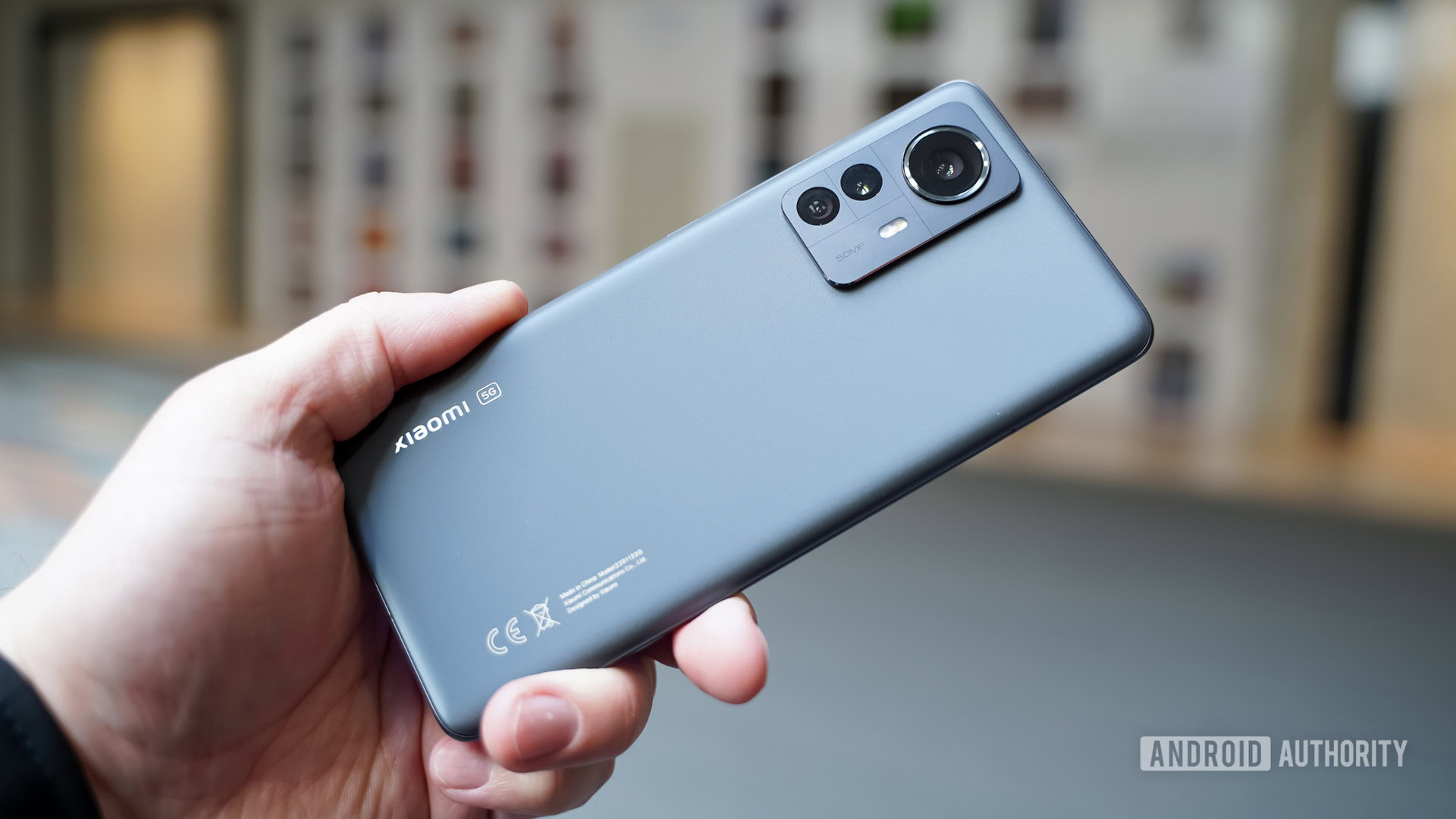
Xiaomi had all the right pieces in place to build a competitive flagship. The 12 Pro came very close to putting those pieces together in just the right way, but it managed to misplace a few things along the path toward flagship perfection.
The most concerning shortcoming of the phone, battery life, is somewhat balanced out by ridiculous charging speeds. I’d feel better about the Xiaomi 12 Pro if it had more left in the tank at the end of the day, though it is absolutely awesome that the phone can fully recharge in about 20 minutes. Xiaomi also opted to leave an IP rating off the feature list and that was a critical mistake. Nearly all the top flagships are certified against water immersion and the 12 Pro is not. Further, most competing devices up the wow factor a bit with designs that stand out and materials that carry a more premium feel. Toss in the average camera with its inconsistent zoom setup and you have a phone that doesn’t quite measure up, particularly considering the price of the competition.
Xiaomi came close to assembling a great device. Instead, it's merely a good one going up against some great opposition.
It’s not all bad, of course. The design may be boring, but Xiaomi still constructed a fine phone. The display, in particular, is appealing thanks to its sharp resolution, bright, colorful panel, and smooth scrolling. Xiaomi’s MIUI 13 is a bit too bloated, but the phone comes with Android 12 and a three-year system upgrade commitment from Xiaomi. And apart from the tendency to warm up under stress, the Xiaomi 12 Pro pushes the Snapdragon 8 Gen 1 harder than any phone to date.
Xiaomi came so close to assembling a great device. Instead, we have to settle with what’s merely a good one. Good is good, but unfortunately for Xiaomi, you can get greatness for the same price or even less.